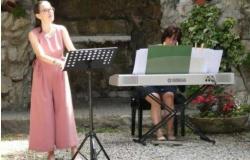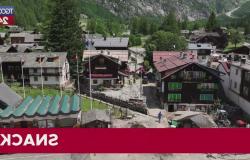by Gualtiero Repossi,
photo Gianluca Bucci and Motorcycling Archive
November 2023, a single-cylinder stands out on the Ducati stand at Eicma, the international motorcycle show. It is the Hypermotard 698 Mono: it has an aggressive line, an innovative engine (which is called Superquadro) and is equipped with desmodromic distribution. You can read how the new “mono” from Bologna is made and how it goes in the test on page 106 of this issue. For the younger ones, and also for those who do not know the history of Ducati, we tell you that three decades ago in Borgo Panigale another motorcycle with a single cylinder was born, equally “desmo”, aggressive, innovative and also very racing: here’s the Supermono.
Presented at the IFMA in Cologne in October 1992, (but our magazine had anticipated the technical layout of the engine already in November 1990) it had caused a huge sensation: it was the most sophisticated single-cylinder ever conceived, but over the years it has also become one of the most sought after and coveted Ducatis by collectors given that just 67 examples were built.
Born from an idea of engineer Massimo Bordi, the Supermono project marked the debut of some important figures in the recent history of Ducati: the South African designer Pierre Terblanche – father of Multistrada, MH900E, 999 and Hypermotard – and Claudio Domenicali, today CEO of Ducati Motor Holding SpA, at the time a young newly graduated engineer who had recently joined the company.
Supermono was conceived to compete in the “Sound of Singles”, a very popular class all over the world, thanks to a decidedly free technical regulation, which placed the only constraint on competing with single-cylinder four-stroke motorcycles. During its heyday, the Supermono category was used as a European Championship and for four seasons it also supported the Superbike World Championship. It also offered close and exciting races with a wide variety of different bikes and engines – Yamaha, Honda, KTM, Husqvarna, Gilera, Suzuki and Rotax, some of which up to 780 cc – arousing “official” interest not only of Ducati, but also of other manufacturers such as Gilera, Bimota, and Yamaha (through the Italian importer) and of a multitude of tuners.
Compared to its rivals, the first Ducati Supermono (and also the second version, the one with the engine increased to 572 cc), had only one flaw, the smaller displacement. However, anyone who has ever raced this bike has fallen in love with it.
The Supermonos were built in two distinct versions. The first from 1993 had a displacement of 549 cc and was produced in 44 examples at a price of 45,220,000 lire, a price slightly lower than a Ducati 888 Racing; the second, however, assembled two years later, had its displacement increased to 572 cc. Both use the Desmoquattro horizontal cylinder engine derived from the 888 cc V-Twin, multiple Superbike world champion, with the vertical cylinder replaced by a blind housing containing a double balancing rod. A decidedly effective system, adopted years later by BMW on its F800 parallel twin built by the Austrian Rotax. But why choose such a solution, in fact a compromise? Engineer Bordi said that Ducati’s success consisted in the fact of build motorcycles and engines different from others and creating a mono equipped with a usual anti-vibration counter-rotating shaft would have been an absolutely banal project, especially after having created an eight-valve Desmo twin-cylinder complete with electronic injection. Then Ducati already had a “winning” head at home, that of the 851/888. In this way, the design, construction and development times of the engine would also have been shortened, with the further prospect of seeing this bike on the road as well as on the track. In addition to the racing one, three versions of the Supermono were planned, all equipped with electric start: a road replica of the racing model, a semi-faired Cafè Racer type, a classic naked with a carburettor instead of injection. None of the three ever made it to the assembly line.





